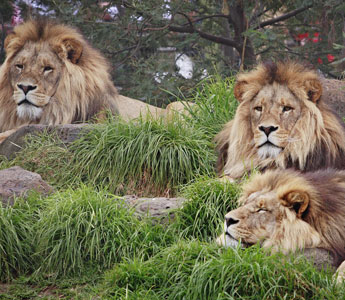Animal Kingdom
What is an Animal Kingdom?

The Animal Kingdom includes eukaryotic multicellular organisms (organism whose cells contain complex structures enclosed within membranes) which exhibit heterotrophic nutrition (nutrition obtained by digesting organic compounds). They are commonly known as animals and differ characteristically from the other major groups of plants, in their capacity to be able to move.
There are many different types of animals in the world. They contribute to about a million living species that occur in all types of habitat and exhibit a great deal of variation in their form, size and life styles. Many are quite similar to each other, others are quite different. Animals can be classified based on their similarities.
Animal classification
Animals are classified into 2 main groups, as follows:
|
Invertebrates Animals without a Backbone or Spinal Column: |
Vertebrates Animals with a Backbone or Spinal Column: |
|---|---|
|
Protozoa |
Fish |
|
Echinoderms |
Amphibians |
|
Annelids |
Reptiles |
|
Mollusks |
Birds |
|
Arthropods |
Mammals |
|
Crustaceans |
Marsupials |
|
Arachnids |
Primates |
|
Insects |
Rodents |
|
Cetaceans |
|
|
Animals such as seals |